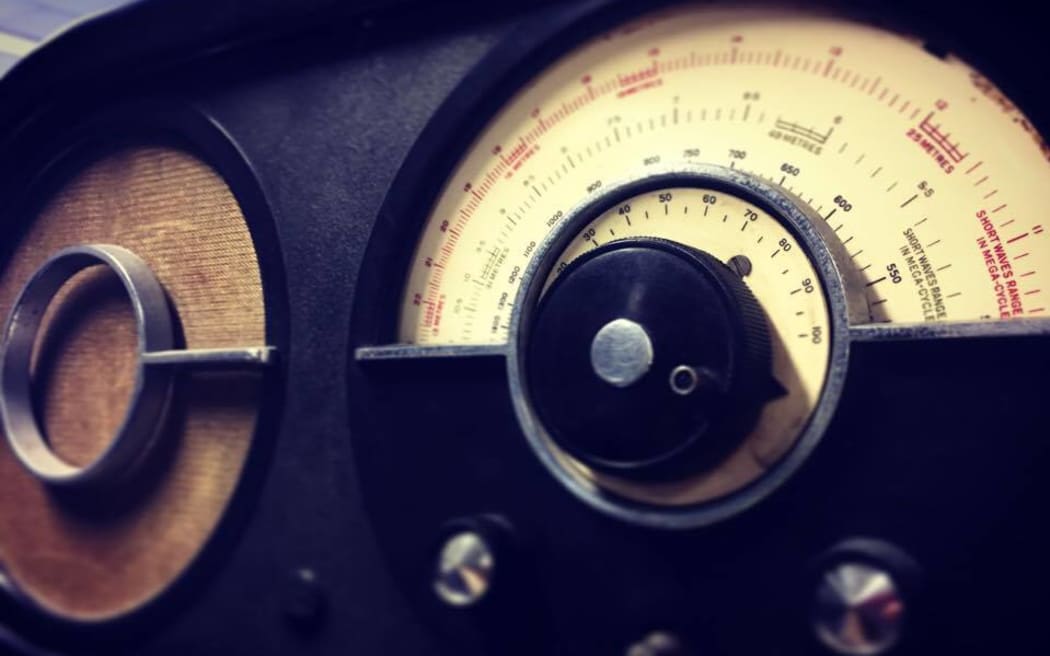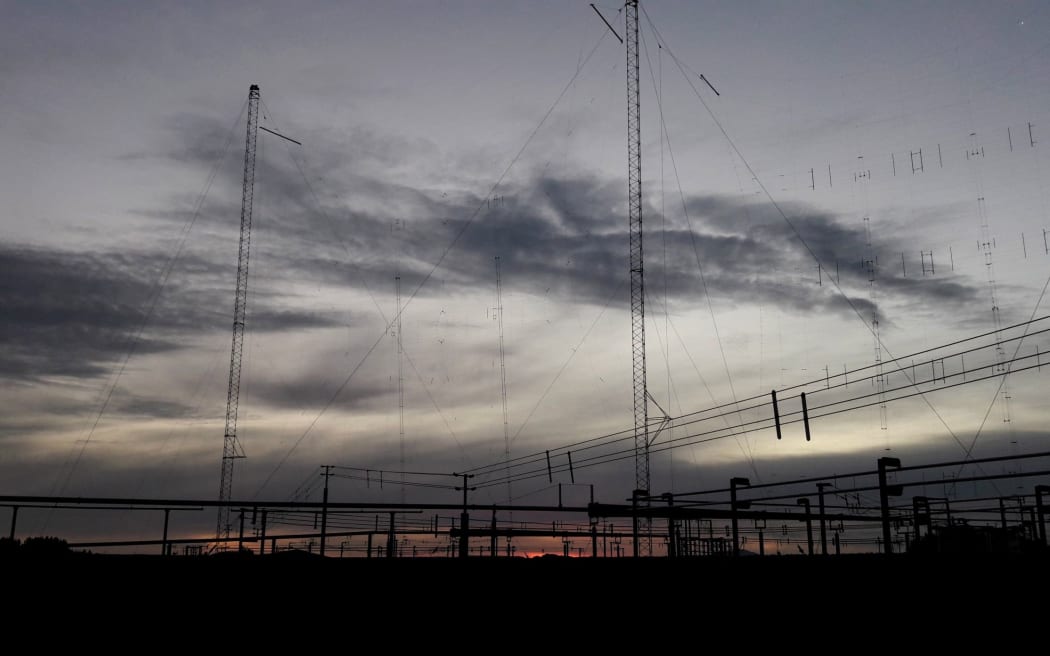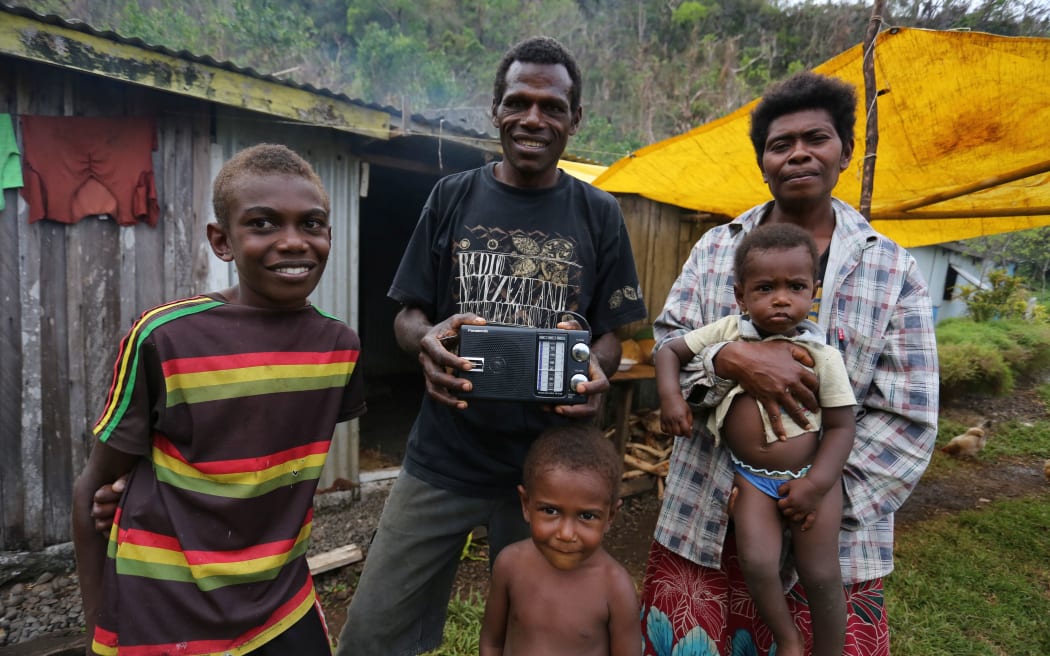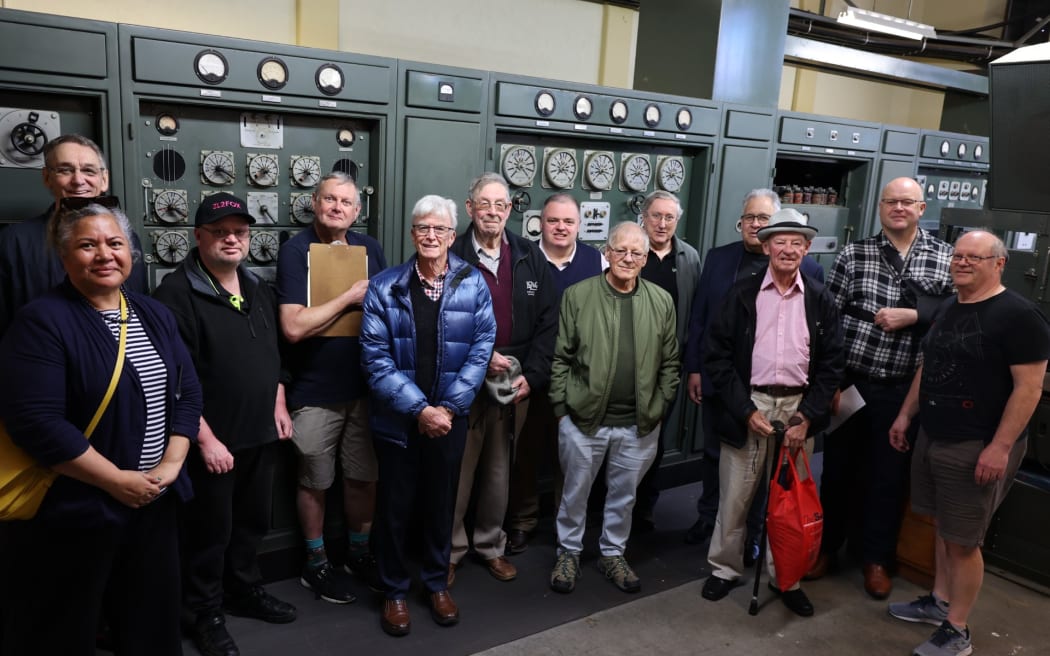
A shortwave receiver constructed by the Ecko company, England c 1940. Photo: RNZ / Daniela Maoate-Cox
It has been 75 years since Radio New Zealand commenced broadcasting on shortwave frequencies into the Pacific region.
The service used two 7.5 kilowatt transmitters in Titahi Bay, near Wellington, which had been left by the United States Military, after WWII.
Radio New Zealand began short-wave broadcasts to Australia and the Pacific in 1948. During those early broadcasting days, the programme related directly to events in New Zealand and the Pacific region.
In the late 1980s the government, at that time Labour, came under pressure to take a more active role in the region. This led to upgrades to the short-wave service.
A new 100 kW transmitter was installed at Rangitaiki in the middle of the North Island. The service was re-launched as Radio New Zealand International (RNZI), on the same day the Commonwealth Games opened in Auckland in 1990. Today, RNZI is known as RNZ Pacific, a change made in 2017 to clearly reflect what the service does and its focus.
Looking back on RNZ's 75 years of service, chief executive and editor in chief, Paul Thompson, says:
"Shortwave was relatively modern technology when we brought it in 75 years ago, and who would have thought at that stage that in 2023 we would be about to install another shortwave transmitter in Rangitaiki, where our transmitter is, so look it's amazing technology, it is old world in some ways, but still works.
"It's just a pivotal part of our [RNZ] trusted content to the wider Pacific region, and we should be feeling proud that we are still maintaining that tradition," he said.

The transmitting antennas at the RNZ Pacific transmitter site in Taupo Photo: RNZ/Steve White
This refers to another new transmitter, which will be built for RNZ Pacific following the New Zealand government's NZ$4.4 million funding commitment in 2022 - ensuring the future of the service.
Over the years, the service has added a website which provides a comprehensive Pacific news service with the very latest Pacific stories and an extensive online news archive.
Thompson said RNZ Pacific was continuing to add distribution methods to the service.
"And obviously the internet, digital and social media has broadened our reach and engagement with people but it is interesting how shortwave keeps chugging away doing the hard work, it really is the pack horse or workhorse of our distribution through the region, really glad we are investing and improving it."
RNZ Pacific broadcasts in both digital and analogue shortwave to partner stations and individual listeners across the Pacific region
Its technical specialist, Adrian Sainsbury said: "Many partner stations in the Pacific re-broadcast our content using digital shortwave which wasn't possible under the old AM system."
He said digital shortwave offered partner stations FM-quality audio.
"And I would say that in a nutshell that probably summarises 75 years because technology has changed so much in that time, yet despite that still has an important part to play in the modern world," Sainsbury said.

Chief Ben Lovo and his family of Bongkil Village on Erromango, Vanuatu. He says shortwave broadcasts from RNZI during Cyclone Pam allowed him to warn four villages. Photo: RNZI/Koroi Hawkins
Thompson said that it was "absolutely critical, and you see that shortwave being used during the Russian invasion of Ukraine, that when there is civil unrest or civil disturbance or the weather takes out local infrastructure, the ability to be able to transmit from New Zealand and get it to people through their radio receivers is very powerful".
Sainsbury agreed, citing the Hunga Tonga-Hunga Haʻapai volcanic eruption as an event with region-wide consequences, and rendered internet cables and satellite transmission inoperable.
"Where traditional communication like cable or satellite reception was impaired by the volcanic ash, but shortwave radio could still get through," he said.

RNZ staff and members of the NZ DX League at the Titahi Bay RNZ transmitter site. Photo: RNZ/Stephen Parker
Also celebrating its 75th anniversary is the NZ Radio DX League.
The term D-X is an old telegraphic term meaning "long distance".
A life member of the New Zealand DX League, Brian Clark, said shortwave was still an important medium for many people in remote areas of the planet.
"In a lot of parts of the world, particularly in Asia and Africa, people don't have access to the internet or reliable internet, so for us [DX league] shortwave is still a relevant medium and the role RNZ playing in the Pacific with RNZ Pacific and the DRM broadcasts and the local rebroadcasts really is world-class."

